Search engine optimization (SEO) best practices are essential for building a strong online presence, helping your target audience find and connect with your content easily. In today’s competitive market, mastering these strategies is crucial for standing out and driving meaningful traffic to your site. After all, user behavior is constantly changing, making adaptability an important trait of any digital marketing strategy. By adhering to SEO best practices, you can ensure your SEO efforts are set up for long-term success.
What are SEO Best Practices?
SEO best practices are a set of dependable tactics designed to improve a website’s visibility in search engine results pages (SERPs). They are the foundational activities and strategies for optimizing your site for search engines like Google and Bing. These practices encompass everything from keyword research and content creation to technical adjustments and link-building efforts. Following SEO best practices ensures that your website is well-structured so that search engines can easily crawl and index your content while providing users with value and relevance.
SEO Best Practices to Follow for Optimal Results
Your enterprise can leverage several essential SEO tactics to get the most out of your digital marketing campaign. Here are ten SEO best practices to keep in mind:
Create Content Around Search Intent
Search intent, or user intent, is the reason behind a user’s query. Understanding and aligning your content with search intent is critical to successful SEO. Search engines have become increasingly sophisticated at interpreting the intent behind queries, so simply targeting keywords is no longer enough. Your content needs to address the underlying questions and needs of your audience.
To create content that aligns with search intent, start by analyzing the types of queries your target audience makes. Are they looking for information (informational intent), trying to make a purchase (transactional intent), or searching for a specific website (navigational intent)? Once you understand the intent, tailor your content to meet those needs. For example, if users are searching for “how-to” information, your content should provide step-by-step guides, tips, and insights that directly answer their questions. When you provide your audience with relevant and helpful content, they’re likelier to stay on your site longer to engage with more useful content.
Conduct Thorough Keyword Research
Keyword research remains one of the pillars of effective SEO. As user behavior shifts, you can adapt by conducting keyword research to identify primary and secondary keywords that resonate with your audience in their search queries. There are many nuances to keyword research, such as high search volume (average number of monthly searches) and keyword difficulty, or KD%, (how hard it is to rank for those keywords). For example, the keyword “SEO best practices” has a KD of 85%, making it “super hard” to stand out among the competition.
Start by using tools like Google Keyword Planner, SEMrush, or Ahrefs to identify keywords relevant to your industry and have a healthy balance of search volume and competition. But don’t stop at single keywords; focus on long-tail keywords and phrases that match specific queries your audience might be searching for. Long-tail keywords often have lower competition and are more closely aligned with user intent, making them a powerful tool for attracting targeted traffic.
Once you’ve identified your keywords, strategically incorporate them into your content, titles, meta descriptions, and URLs, but avoid keyword stuffing. The goal is to use keywords naturally and contextually within your content.
Provide Users with High-Quality Content
High-quality content is at the core of every successful SEO strategy. Search engines prioritize informative, well-written content relevant to the user’s query. Quality content helps rank higher and keeps users engaged, reducing bounce rates and increasing the likelihood of conversions.
To produce high-quality content, focus on providing value to your readers. This means creating original, comprehensive content that thoroughly answers the user’s questions. You can use a mix of text, images, videos, and infographics to make your content more engaging and easier to digest. Also, ensure your content is free of grammatical errors and formatted for readability with headings, bullet points, and short paragraphs.
Update your content regularly to keep it fresh and relevant. Search engines favor current content, so revisiting older posts and updating them with new information can help maintain or even improve their rankings over time.
Optimize Title Tags and Meta Descriptions
Title tags and meta descriptions are essential elements of on-page SEO. They help search engines understand the content of your pages and influence click-through rates from search results.
Your title tag should concisely and accurately describe the page’s content, ideally between 50 and 65 characters, to ensure it is fully displayed in search results. Incorporate your primary keyword towards the beginning of the title for better visibility.
Meta descriptions, on the other hand, summarize your page’s content in about 100-155 characters. While meta descriptions don’t directly impact rankings, they play a crucial role in attracting users to click on your link. Write compelling and informative meta descriptions that include your target keyword and a clear call-to-action to entice users.
Optimize Page Load Speed
Page load speed is a critical factor in both user experience and SEO. Slow-loading pages can lead to higher bounce rates, lower engagement, and, ultimately, lower rankings on SERPs. Search engines, particularly Google, use page speed as a ranking factor, making optimizing your website’s performance crucial.
Several factors can affect page load speed, including large images, unoptimized code, and excessive plugin use. To improve your site’s load time, compress images and use the correct file formats. Implement caching techniques and consider using a content delivery network (CDN) to reduce the load time for users across different locations.
Regularly test your website’s speed using a page speed testing tool and make the necessary adjustments to maintain optimal performance.
Create an Internal Linking Structure
Internal linking is an often overlooked aspect of SEO but is crucial for both user experience and search engine crawling. By creating a robust internal linking structure, you can guide users to other relevant content on your site, keeping them engaged longer and reducing bounce rates.
Internal links also help search engines discover and index pages on your site. When you link to other pages within your site, you pass on link equity (also known as “link juice”), which can help improve the rankings of those linked pages.
To create an effective internal linking strategy, ensure that your most important pages receive the most internal links. Use descriptive anchor text that gives users and search engines an idea of what the linked page is about. Avoid using generic terms like “click here” and use keywords relevant to the linked content.
Cultivate Authoritative Backlinks
Backlinks, or inbound links, are links from other websites that point to your site. They are one of the most important ranking factors in SEO because they act as votes of confidence from other sites, signaling to search engines that your content is valuable and trustworthy.
However, not all backlinks are created equal. Search engines prioritize backlinks from authoritative, high-quality websites over low-quality ones. Therefore, focus on cultivating backlinks from reputable sources within your industry.
To build authoritative backlinks, consider strategies like guest blogging, creating shareable infographics, and engaging in partnerships with other websites. Also, keep an eye on your backlink profile to ensure that it remains clean and free of spammy links, which can negatively impact your rankings.
Optimize Images
Images are a vital component of web content, but they need to be optimized for SEO to ensure they don’t slow down your site and are easily discoverable by search engines.
Start by choosing the right file format (JPEG for photos, PNG for images with transparency, and WebP for high-quality images with smaller file sizes) and compressing the images to reduce their file size. Use descriptive file names and add alt text to each image. Alt text not only helps search engines understand what the image is about but also improves accessibility for users with visual impairments.
Consider creating an image sitemap to help search engines discover and include your images in image search results. Regularly audit your images to ensure they are optimized for speed and SEO.
Enhance User Experience
User experience (UX) plays a significant role in SEO. Search engines are increasingly focused on providing users with the best possible experience, which means that websites that are easy to navigate, mobile-friendly, and free of intrusive ads tend to rank higher.
To enhance user experience, ensure your website is responsive and works well across all devices, including smartphones and tablets. Simplify your site’s navigation so users can easily find what they want. Minimize the use of pop-ups and other intrusive elements that can frustrate users.
Pay attention to the layout and design of your content as well. Break up large blocks of text with headings, bullet points, and images, and use a legible font size. The easier it is for users to consume your content, the longer they will likely stay on your site.
Create User-Friendly URLs
The structure of your URLs plays a key role in SEO and user experience. A clean, descriptive URL gives users and search engines a clear understanding of what the page is about, which can positively influence your rankings.
When creating URLs, keep them short and include your primary keyword. Avoid using special characters, numbers, or excessive subfolders, as these can make URLs difficult to read and remember. Instead, use hyphens to separate words and create a logical, hierarchical structure that reflects the content on the page.
For example, a URL like “www.example.com/seo-best-practices” is more effective and user-friendly than “www.example.com/index.php?id=12345&cat=seo”.
Create a Winning SEO Strategy with Cadence
While it may appear daunting, SEO isn’t some big mystery. SEO best practices are tried and true tactics designed to connect your brand to your target audience efficiently and effectively. CadenceSEO is a full-service digital marketing agency and consultancy specializing in all things SEO. Each enterprise is unique, so every SEO strategy journey begins with an SEO audit of your site to identify any holes. From there, we can tailor a winning SEO strategy based on your business’s needs and goals. Our SEO nerds are committed to helping your enterprise increase its online presence, drive traffic, and boost sales. Ready to get started? Schedule your free strategy session today!






